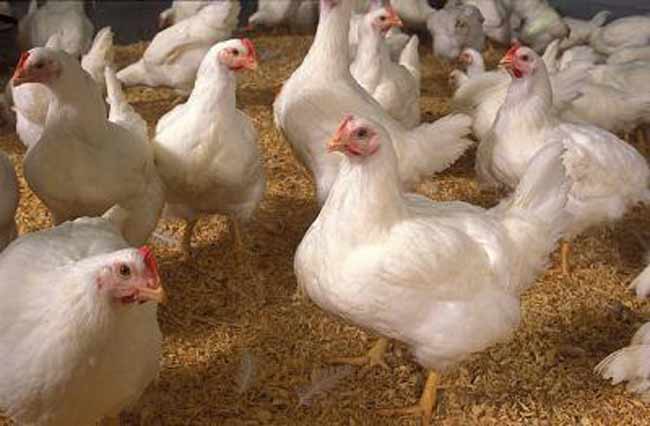Oh, Chicken Feathers! How to Reduce Plastic Waste

Poultry farmers could soon be the source of much more than buffalo wings and omelets. Chickens byproducts could be used to make biodegradable plastics and cheap energy, two new studies find.
Many types of animal waste and plants, including corn and soybeans, have been proposed as alternative sources of plastics and fuel, and demand for them is on the rise.
So one researcher has turned to agricultural waste, such as poultry feathers and eggs that didn’t pass inspection, which are currently used in low-value animal feed or simply thrown away, to develop more environmentally friendly plastics.
“Twelve percent of all plastic packaging ends up in landfills because only a fraction is recycled,” said Virginia Tech researcher Justin Barone, who is heading up the agricultural waste effort. “Once in a landfill, it doesn’t biodegrade. The challenge is, how can we create a simpler plastic bag or a bottle that will biodegrade?”
Today, packaging adds 29 million tons of non-biodegradable plastic waste to landfills every year, according to the U.S. Environmental Protection Agency,
Plastics from biomass (animal waste and plant materials), like some recently developed to dissolve in seawater, are made the same way as petroleum-based plastics, are actually cheaper to manufacture and meet or exceed most performance standards. But they lack the same water resistance or longevity as conventional plastics, said Barone, who presented his research at the March 29 American Chemical Society National Meeting in Chicago.
Adding polymers created with keratin, a protein that makes hair, nails and feathers strong, may improve the strength and longevity of the plastics made from chicken feathers and eggs. Other modifications to the polymer, such as adding chicken fat as a lubricant, should help the polymer to be processed faster and smell better.
Get the world’s most fascinating discoveries delivered straight to your inbox.
Another scientist has developed a furnace system that converts poultry litter into a fuel that can be used to heat chicken houses.
The fuel, made from poultry waste and rice hulls and wood shavings once used as chicken bedding, can be gathered from hen houses, stored on-site, and put into a heat-generating furnace, reducing farmers’ energy costs by as much as 80 percent.
While the fuel would reduce greenhouse gas emissions, it does produce an ash that could hurt sensitive watersheds if dumped there, said Tom Costello of the University of Arkansas, who led work to develop the furnace.
- Top 10 Emerging Environmental Technologies
- New Biodegradable Plastics Could Be Tossed into the Sea
- All About the Environment

Andrea Thompson is an associate editor at Scientific American, where she covers sustainability, energy and the environment. Prior to that, she was a senior writer covering climate science at Climate Central and a reporter and editor at Live Science, where she primarily covered Earth science and the environment. She holds a graduate degree in science health and environmental reporting from New York University, as well as a bachelor of science and and masters of science in atmospheric chemistry from the Georgia Institute of Technology.
